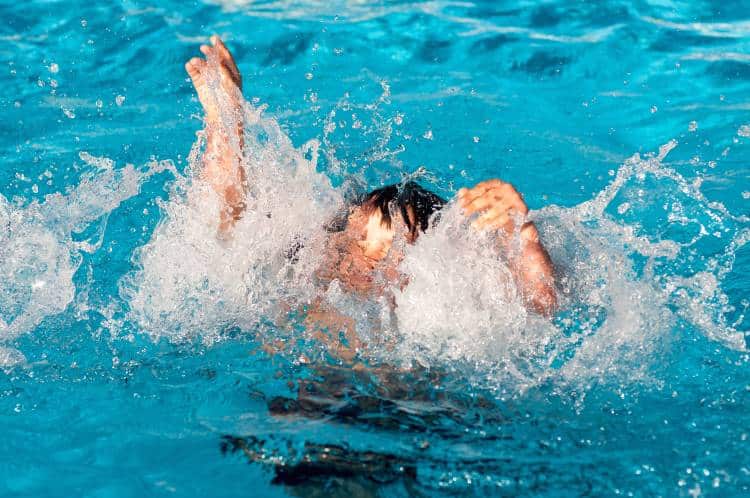Across the United States, thousands of young children and adults lose their lives in needless drowning accidents each year. Countless others become permanently disabled as a result of non-fatal drownings.
When these catastrophic incidents occur, it's normal for victims and surviving family members to ask themselves questions such as:
With two distinguished hundred-million-dollar drowning accident verdicts and numerous other million-dollar settlements under its belt, the Haggard Law Firm has demonstrated that we possess the experience necessary to effectively represent drowning victims.
Nothing can turn back time and undo the pain and trauma that has been caused. However, it's possible for anguished families to get justice and closure after a tragic drowning accident take place.
An experienced drowning lawyer and their legal team can help achieve justice by making sure that negligent parties are held liable and that their recklessness doesn't lead to more misery. Drowning deaths are avoidable in most cases, but only by taking action can victims ensure that the same pain is not put onto other unsuspecting victims.
If you've recently lost a loved one in a drowning incident, contact us today for a free drowning lawsuit consultation. We can analyze your case and explain any and all legal paths that exist for getting you justice and ensuring that the loss of your loved one was not in vain.
It seems like every summer, we hear at least a couple of news stories reporting children and even adults losing their lives in drowning accidents. But, how prevalent are these avoidable tragedies? Let's review the latest statistics.
Worldwide studies, specifically one completed by the World Health Organization (WHO), found that drowning is the 3rd leading cause of unintentional death in the world.
Making up 7% of all injury-related deaths, drowning accidents account for as many as 320,000 deaths around the world each year. This statistic is absolutely sobering, especially when we consider how safety regulations and even simple supervision have the potential to prevent a large percentage of these fatalities.
Looking towards our own shores, the United States Swimming Foundation recently provided some concerning statistics regarding drownings in swimming pools and spas. As many as 221 fatal child drowning accidents (ages <16 years old) were reported by news outlets in 2019. However, this study does not take into account deaths not reported by news media or adult drowning deaths.
The CDC has previously released drowning statistics as well, though they are not as recent given that they correspond to the time period from 2005 to 2014.
The US Center for Disease Control found that for the above-mentioned 9-year time interval, there were 3,536 non-boating related drownings. This simplifies to about 10 deaths per day, an even more terrifying number to assimilate.
The same CDC drowning report identified the at-risk populations as well as the most glaring risk factors. They are as follows
Populations At Risk Of Drowning
Most Common Causes Of Drowning & Pool Injury:

As we can see from the list above, there are various circumstances that can result in fatal drowning accidents. Additionally, fatal drownings can be broken down into five separate steps or stages that, as we explain below, ultimately end in the death of the victim.
The five stages of drowning are:
In this first stage is when the victim first realizes that they are drowning. Indeed, this realization is not always instant. It can take some struggling for a swimmer to realize that, for one reason or another, they will not be able to exit the water or hold themselves above the surface.
Once the drowning swimmer starts having trouble getting a fresh breath of air, they will often start making random grasping movements or flipping motions. It is likely that their head will be tilted back in an attempt to remain above water, though this is rarely effective. Most importantly, and contrary to what Hollywood feature films lead us to believe, a person who is drowning rarely makes any sounds.
Once a drowning victim is below the surface of the water, their body will stop trying to breathe as this would only cause them to inhale water into the lungs. Given that this is an involuntary physiological reaction, the victim is unable to fight this even if they wanted to.
During this stage, the victim will probably continue to physically struggle in an attempt to breach the surface. However, as the body and muscles run out of oxygenated blood, the next stage of a drowning accident sets in - unconsciousness.
As mentioned previously, in the third stage of drowning accidents, the victim has now lost consciousness due to a lack of oxygen. Unable to swim upwards, the body will begin to sink towards the depths of a swimming pool, ocean, or lake where the drowning is taking place.
This sinking may occur quickly or slowly and will depend on how much air was left within the victim's lungs. However, what is clear is that the individual's body will not return to the surface unless they are rescued or until death has already occurred. Breathing has completely stopped by this point (respiratory arrest.)
The lack of oxygenated blood reaching the brain will cause the drowning victim's body to look as if they are convulsing or jerking violently. Additionally, the skin will begin to turn blue; this is particularly noticeable in the fingers and lips.
If a drowning accident victim has not received emergency attention by the time that both their respiratory and circulatory systems have stopped, then they are considered to be clinically dead.
At this point, life-saving measures such as CPR and defibrillation could still save the drowned person, though even if they are revived, it is almost guaranteed that they will have suffered significant damage to critical tissues.
For instance, as few as 4 minutes without oxygen can cause the death of brain cells. Being part of the nervous system, brain cells are unlikely to regenerate which means that once this damage is done, the individual will probably live the rest of their lives with permanent brain dysfunction. Such instances where a person drowns but is rescued before they die are known as non-fatal drowning accidents.
You may have heard about the legal concepts of negligence and premises liability. However, it's more likely that you've heard about them in the context of other personal injury cases such as slip and fall accidents. Nevertheless, the idea behind such personal injury claims and drownings is the same.
When victims drown in swimming pools or other bodies of water that are considered to be the property of someone else, then the owner of those premises is often considered to be liable for injuries suffered on their property and can be found negligent in their duty to safeguard the life and wellness of their guests. If they can be held liable in a court of law, they may also be ordered to pay significant compensation for the damages suffered by the victim and their family.
When death results from drownings, the legal proceedings may center around a wrongful death lawsuit as opposed to a premises liability or personal injury case which are more applicable in a non-fatal drowning accident, for instance.
In any case, drowning accident lawyers are the type of attorney and law firm that the victims of a drowning accident should seek out to help with their legal claim.
A drowning accident attorney will have experience handling lawsuits and other legal injury claims involving drowning or non-fatal drowning in a public or private pool, hot tub, at a camp lake, at a hotel pool, or any other environment where a drowning case can develop.
A drowning accident lawyer will also have the support of an entire law firm which can help them build a strong case for their clients. This includes paralegals to assist with proceedings as well as administrative personnel who can handle the necessary paperwork.
Perhaps most importantly for the victims or their loved ones is the fact that the attorney-client relationship should be one built on trust and compassion. The goals of both the accident lawyer and the client need to be aligned for a case to have the best chances of being successful. If an attorney and their law firm haven't handled a swimming pool injury or a drowning accident case in the past, then it's quite possible that they will be unprepared to adequately represent the victim of such an injury case.
Any attorney can provide legal advice. However, not all legal advice is good advice. If you're considering filing a drowning accident lawsuit, make sure that you start building an attorney-client relationship correctly from day one. Contact us to schedule a consultation with our experienced pool drowning accident law firm today and, in doing so, take the first step on the road to justice.
 Schedule A Call Here
Schedule A Call HerePool Drowning Lawyer Minnesota
Pool Drowning Lawyer South Carolina
Pool Drowning Lawyer Mississippi
Pool Drowning Lawyer Louisiana
Pool Drowning Lawyer New Mexico
Pool Drowning Lawyer California
Pool Drowning Lawyer Tennessee
Pool Drowning Lawyer West Virginia
Pool Drowning Lawyer North Carolina
Pool Drowning Lawyer New Jersey
Pool Drowning Lawyer Massachusetts
Pool Drowning Lawyer Pennsylvania
Pool Drowning Lawyer Connecticut
Pool Drowning Lawyer Rhode Island
Pool Drowning Lawyer New Hampshire
Pool Drowning Lawyer Wisconsin
Pool Drowning Lawyer South Dakota
Pool Drowning Lawyer North Dakota